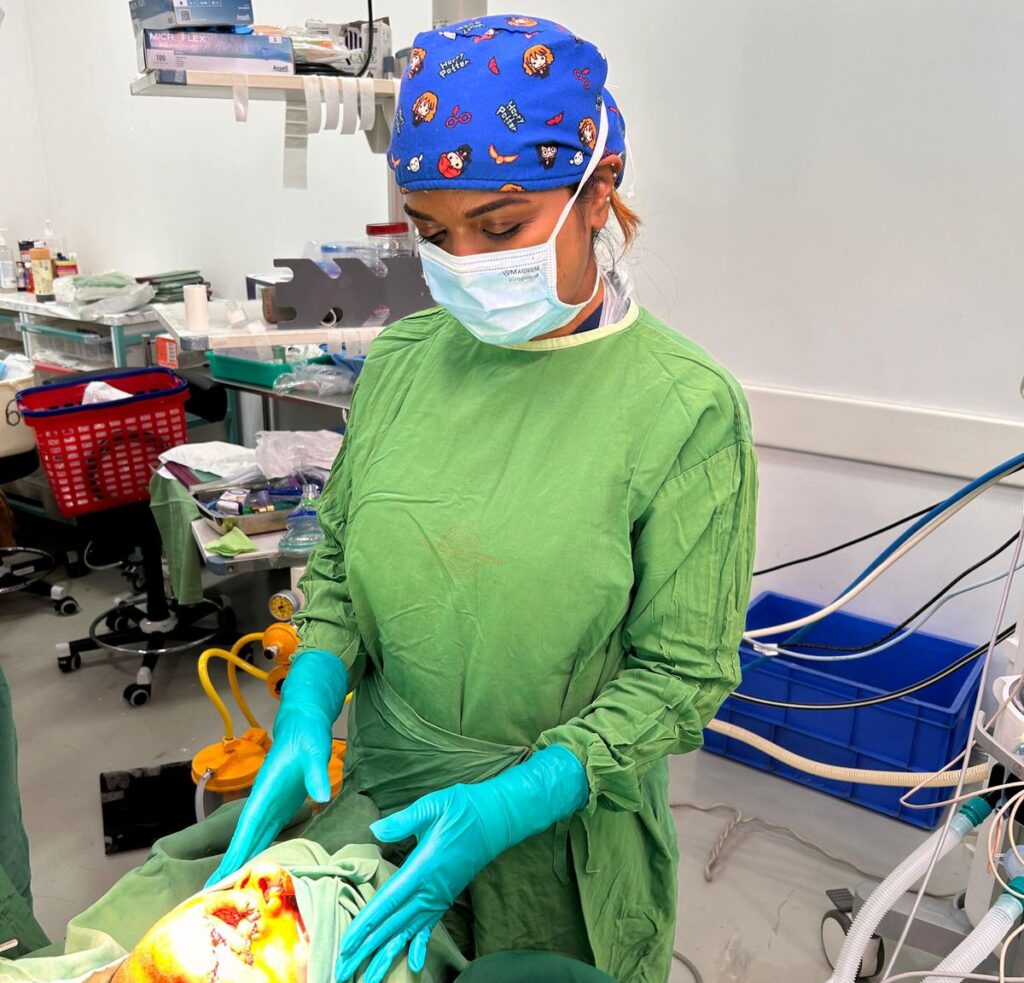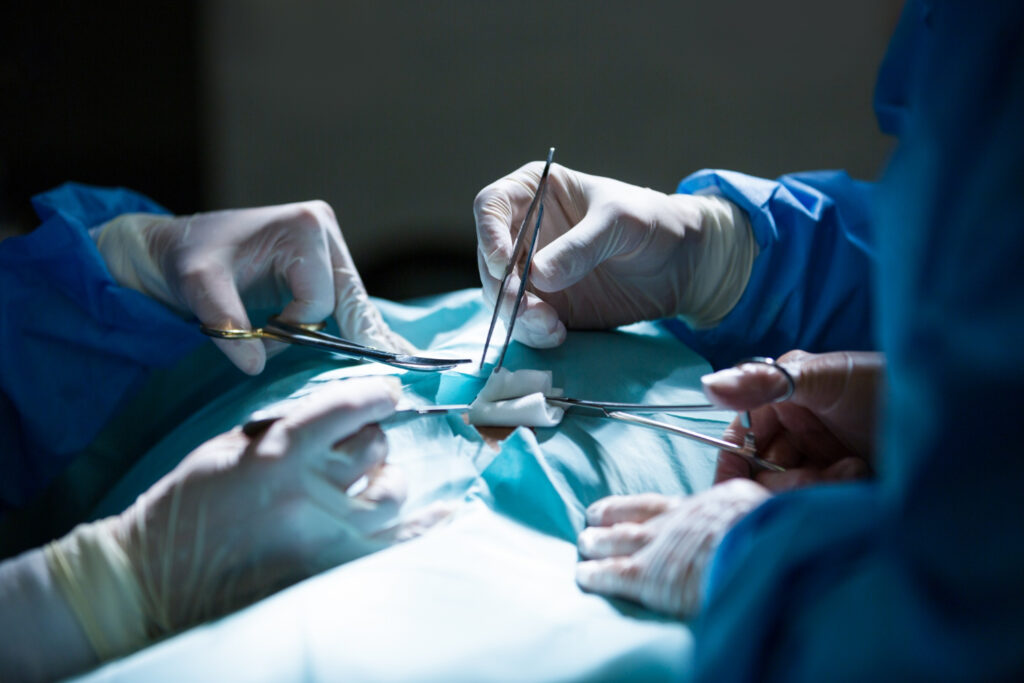Cancer treatment can be life-saving—but it often leaves behind physical challenges, including disfigurement, tissue loss, and functional impairment. Onco-reconstructive surgery helps restore what’s lost after tumor removal, supporting both physical recovery and emotional healing.
Dr. Sannia Salim specializes in complex microsurgical and reconstructive procedures that restore appearance, mobility, speech, and quality of life after cancer surgeries. Her expertise spans head & neck cancers, breast cancer, and soft tissue sarcomas.
She has undergone vast training in advanced cancer reconstruction surgeries at high-volume centers such as Tata Medical Centre, Kolkata, Mahatma Gandhi Medical College, and Shri Ram Cancer Centre, Jaipur—equipping her with the experience and precision required for intricate reconstructions that truly transform patients’ lives.

Head and neck cancers often require removal of essential structures like the jaw, tongue, cheek, or palate. Reconstruction is critical not just for appearance but also for vital functions such as speaking, swallowing, and chewing.
Free Flap Reconstruction (ALT, RAFF, SCIP, Fibula)
Tissue from the thigh, forearm, or leg is used to reconstruct oral and facial defects, with precise microsurgical connection of blood vessels to ensure survival of the flap.
Mandibulectomy and Maxillectomy Reconstruction
Rebuilding the lower or upper jaw using bone flaps (like fibula) to restore facial structure, chewing ability, and facial symmetry.
Tongue, Buccal Mucosa & Palate Reconstruction
Reconstruction of the tongue, inner cheek, and palate using thin, flexible tissue for speech, swallowing, and comfort.
TFL Sling for Trismus and Facial Support
Supportive reconstruction for patients with limited mouth opening or facial drooping after surgery or radiation.
Functional Restoration of Swallowing & Speech
Careful surgical planning ensures functional outcomes—especially for articulation, tongue movement, and normal oral intake.

Breast cancer patients often undergo mastectomy, leading to the loss of the breast and sometimes the nipple. Reconstructive surgery helps restore body image and self-confidence.
Immediate & Delayed Reconstruction
Breast reconstruction can be done during the same surgery as mastectomy or later, depending on cancer treatment and patient readiness.
Autologous Flap-Based Reconstruction (DIEP, LD, TRAM)
Uses tissue from the abdomen (DIEP/TRAM) or back (Latissimus Dorsi) to recreate a natural-looking breast with long-term results.
Implant-Based Reconstruction
A quicker alternative using silicone or saline implants to restore volume and shape, sometimes combined with flap procedures.
Nipple & Areola Reconstruction
Final stage reconstruction using local flaps, skin grafts, or tattooing to create a complete, natural appearance.

Sarcomas and other soft tissue cancers can affect the arms, legs, or trunk, requiring wide excision of tumors. Dr. Sannia performs limb salvage surgery to avoid amputation and restore function.
Reconstruction Post-Sarcoma Resection
Large defects are reconstructed using muscle or skin flaps to preserve limb strength and mobility.
Bone & Wound Coverage using Microsurgical Flaps
When major bone or soft tissue is exposed, flaps with their own blood supply are transferred to the site to promote healing and protect critical structures.
Every cancer case is unique. Dr. Sannia works closely with oncologists, radiation specialists, and patients to plan the best time and method for reconstruction—whether it’s immediate or delayed. Her approach blends surgical precision with empathy, aiming to restore dignity, confidence, and a sense of wholeness after cancer.
Downtime, Results & Safety
Onco-reconstructive surgery plays a vital role in restoring form, function, and confidence after cancer treatment. Whether it’s reconstruction following head & neck, breast, or skin cancer surgery, each case is highly individualized. Recovery varies based on the cancer type, site, and surgical complexity:
Hospital stay: Typically ranges from 3–10 days, depending on the extent of reconstruction and overall health
Light activity or return to work: Resume within 3–6 weeks, with adjustments based on the surgical site and patient condition
Strenuous activity or exercise: Resume after 6–10 weeks, following medical clearance and physical recovery
Visible improvement: Begins as swelling and bruising subside over 4–8 weeks, with continued refinement over the next few months
Scarring: Strategically placed and often minimized using advanced reconstructive techniques; may improve over time with therapy
Functional outcomes: Gradually improve with the support of physiotherapy, speech therapy, or other rehabilitation modalities as needed
All onco-reconstructive procedures are performed in accredited surgical centers under strict oncologic and reconstructive protocols. Dr. Sannia works closely with cancer surgeons and multidisciplinary teams to ensure comprehensive care. Her approach focuses on preserving or restoring vital functions—such as speech, swallowing, or movement—while also addressing aesthetic concerns for a holistic recovery.